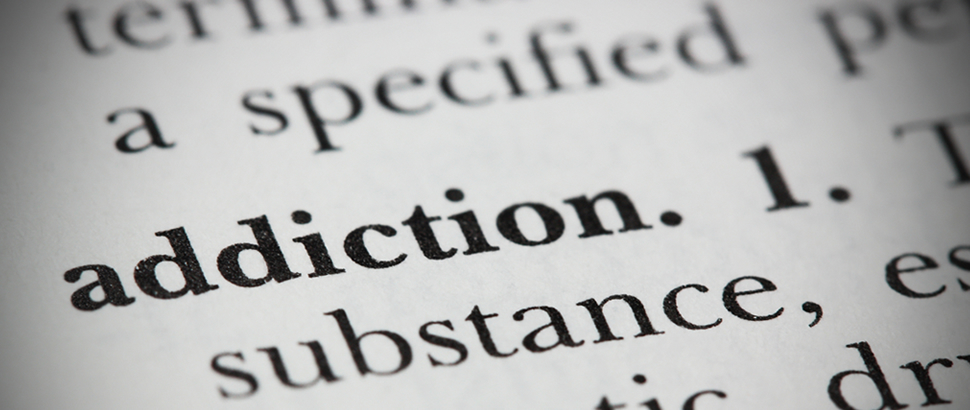

What follows is ASAM's short definition of addiction, which was revised in 2011 and can be read on their website
Short Definition of Addiction
Addiction is a primary, chronic disease of brain reward, motivation, memory and related circuitry. Dysfunction in these circuits leads to characteristic biological, psychological, social and spiritual manifestations. This is reflected in an individual pathologically pursuing reward and/or relief by substance use and other behaviors.Addiction is characterized by inability to consistently abstain, impairment in behavioral control, craving, diminished recognition of significant problems with one’s behaviors and interpersonal relationships, and a dysfunctional emotional response.
Like other chronic diseases, addiction often involves cycles of relapse and remission. Without treatment or engagement in recovery activities, addiction is progressive and can result in disability or premature death.
The following is taken from their long definition of addiction (also available on their website)
... there are five main features of addiction, namely:
a. Inability to consistently Abstain
b. Impairment in Behavioral control
c. Craving, or increased “hunger” for drugs or rewarding experiences
d. Diminished recognition of significant problems with one’s behaviors and interpersonal relationships
e. A dysfunctional Emotional response.These five features are not intended to be used as “diagnostic criteria” for determining if addiction is present or not. Although these characteristic features are widely present in most cases of addiction, regardless of the pharmacology of the substance use seen in addiction or the reward that is pathologically pursued, each feature may not be equally prominent in every case. The diagnosis of addiction requires a comprehensive biological, psychological, social and spiritual assessment by a trained and certified professional.
2011 American Society of Addiction Medicine; 4601 North Park Avenue, Upper Arcade, Suite 101 Chevy Chase, MD 20815-4520, USA
Substance Dependence DSM-IV or DSM-IV-TR Criteria:
A maladaptive pattern of substance use leading to clinically significant impairment or distress, as manifested by one (or more) of the following, occurring within a 12 month period:
Substance Dependence - Reflects a progression from abuse and reflects physiological, behavioural or psychological consequences.
Blackouts - A type of memory impairment that occurs when a person is conscious but cannot remember the blackout period. In general, blackouts consist of periods of amnesia or memory loss, typically caused by chronic, high-dose problematic alcohol or substance use. Blackouts are most often caused by sedative-hypnotics, such as alcohol and the benzodiazepines.
American Psychiatric Association.Diagnostic and Statistical Manual of Mental Disorders - Fourth Edition (DSM-IV). American Psychiatric Association, Washington D.C., 1994. Substance Abuse and Dependence -The Diagnostic and Statistical Manual of Mental Disorders (DSM) published by the American Psychiatric Association provides a common language and standard criteria for the classification of mental disorders. Here are their criterias for Substance Abuse and Dependence.
WHO Website link for 2016 revision of ICD 10